Jeep Grand Cherokee Vs Honda Passport: Which SUV is Right for You?

It isn’t getting any easier to differentiate between “crossover” and “SUV.” The Jeep Grand Cherokee vs Honda Passport help blur the lines.
Take the Jeep Grand Cherokee and Honda Passport. These two mid-sized options offer more ruggedness than the average, but they’re both unibody designs.
Get a Quote on a New Jeep Grand Cherokee or Honda PassportThe Grand Cherokee arguably invented the category, or at least popularized it. Jeep’s best-seller got a two-pronged redo recently, with the three-row Grand Cherokee L for 2021 and the classic two-row model for 2022. It continues to come in myriad flavors, from no-fuss to fancy-pants, along with a variety of drivetrains.
On the other hand, the Honda Passport is relatively straightforward. A shortened sibling to the popular Pilot, the Passport is a strictly two-row affair, with a strong V6 and agreeable driving dynamics.
Are you in the market for a crossover a little bigger than compact, but not quite three-row big? We take a look at the specs of Jeep Grand Cherokee vs Honda Passport to see which one is your personal Goldilocks pick.
Editor’s Note: For this comparison, we will only be comparing the two-row Grand Cherokee to the Passport, not the L.
Cabin Space
Grand Cherokee: Jeep went full fancy with the latest Grand Cherokee cabin. Clean lines and a dual-layer, multi-material approach give the GC an upmarket feel, even in the lower models. Take a stroll up that trim walk and you’ll find ever more leather—even the quilted Nappa variety—and pretty open-pore wood. Jeep uses a wide, waterfall-like center console for a cockpit feel up front. This can make it feel a little cozier than others in the class, but some folks like the ensconced feel.
Sure enough, the latest Grand Cherokee has ballooned out in all directions, even in two-row form. Front-row occupants have 39.9 inches (1,013 millimeters) of headroom and 41.3 inches (1,049 mm) of legroom; those in back enjoy 39.4 and 38.2 in (1,001 and 970 mm), respectively. Front shoulder- and hip room measurements are 59.2 and and 57.4 inches (1,504 and 1,458 mm).
SEE ALSO: 2021 Jeep Grand Cherokee L Review: Big Red Sleigh RidePassport: The Passport’s interior is much simpler than the Jeep’s—then again, it isn’t tasked with nipping at the heels of the premium brands. You’ll find a simple dashboard design and a low center console, the latter swallowing plenty of bits and bobs. A push-button shifter frees up the space between the seats, too.
Space in the Passport is neck-and-neck with its American competitor. Front-seat occupants will find 39.5 inches (1,003 mm) of headroom, and 40.9 inches (1,039 mm) of legroom. On the flip-side, it’s a Honda advantage in the back, with the numbers coming in at 40.0 and 39.6 inches (1,016 and 1,006 mm), respectively. The wide-body Passport also has an extra few inches of front-seat shoulder- and hip room over the Jeep, measuring 62.0 and 59.1 inches (1,575 and 1,501 mm), respectively.
SEE ALSO: Toyota 4Runner vs Honda Passport ComparisonBottom Line: The Passport lineup tops out right where the Jeep starts picking up steam, so naturally the American out-fancies it. When it comes to outright space, the Honda holds the title here.
Cargo Space and Towing
Grand Cherokee: Jeep says you’ll fit up to 37.7 cubic feet (1,068 liters) of family flotsam behind the second row of seats in the Grand Cherokee. Fold that second row flat and the figure expands to 70.8 cubes (2,005 L).
In standard V6 form, the latest Grand Cherokee will tow up to 6,200 lb (2,812 kg). The plug-in hybrid drops that slightly to 6,000 lb (2,722 kg); the V8 rules the roost at 7,200 lb (3,266 kg).
Passport: The Passport is a storage space king. With the second row up, it scores a huge 50.5 cubic feet (1,430 L). Drop the seats and it very nearly doubles that figure, to 100.8 cu-ft (2,854 L). The only way you’re finding more SUV storage space is going full-size body-on-frame.
No matter the trim, the Passport AWD is rated to a max of 5,000 lb (2,268 kg) for towing. The base front-drive model chops that to 3,500 lb (1,588 kg).
Bottom Line: If space is your biggest concern, then it’s the Passport, no question. Honda’s car-based platform does limit the Passport’s towing capacity, however.
SEE ALSO: 2020 Toyota 4Runner TRD Pro ReviewTechnology and Features
Grand Cherokee: Jeep’s excellent Uconnect 5 infotainment system is standard in the Grand Cherokee. The standard screen size is 8.4 inches, while a 10.1-inch unit is available in the options list. No matter which you pick, they both offer wireless Android Auto and Apple CarPlay, plus Amazon Alexa. A 10.25-inch digital instrument cluster is standard as well, as are six USB ports.
Higher trims include such niceties as a 19-speaker McIntosh sound system, wireless charging pad, head-up display, rear-seat entertainment screens, and a front-passenger screen, too. Night vision is also on the menu, and very effective for those outside urban centers. An available digital rearview mirror makes it easy to see out when the cargo area is fully loaded, too. An air suspension also helps keep the Jeep’s ride smooth, in addition to providing the Trailhawk with additional ride height.
Passport: All Passports use an 8.0-inch touchscreen, running Honda’s latest, tile-based infotainment. It does the job, but it feels distinctly old-school next to the Jeep’s setup. Phone pairing is strictly of the wired variety, too, though there is a wireless charger.
Other available goodies include a Wi-Fi hotspot, navigation with traffic information, a 10-speaker sound system, and tri-zone climate control (including second-row controls). Honda also includes a few driver-selectable driving modes, though not as many as the Jeep offers.
SEE ALSO: 2020 Honda CR-V Hybrid First Drive ReviewBottom Line: The Jeep out-points the Honda here, though it’s important to note that’s because it covers a broader price spectrum.
Jeep Grand Cherokee vs Honda Passport: Powertrains
Grand Cherokee: The standard engine in the Grand Cherokee is the Pentastar 3.6-liter V6. Important figures are 293 horsepower and 257 pound-feet of torque, with an eight-speed automatic handling shifting duties. Jeep offers no less than three 4WD systems, depending on trim. In addition, American buyers can stick with standard rear-wheel drive; it’s all 4×4, all the time, in Canada.
There are two optional engines. Jeep’s old-school 5.7-liter V8 is still available, for those who love the sound and extra towing capacity. It produces 357 hp and 390 lb-ft, and uses cylinder deactivation tech to eke out a few extra mpg when full power isn’t required.
Want even more torque? Go for the four-cylinder. Yes, the plug-in hybrid Grand Cherokee 4xe uses a 2.0-liter turbocharged engine, in tandem with two electric motors. Total outputs are 375 hp and 470 lb-ft of torque.
If you pick either the V8 or the PHEV, the Grand Cherokee goes 4WD.
SEE ALSO: 2020 Ford Escape Hybrid vs 2020 Toyota RAV4 HybridPassport: The venerable Honda V6 sits under every bluff Passport hood. The VTEC singer produces an adequate 280 hp and 262 lb-ft, and sends it through a nine-speed automatic transmission. Base trims come standard with front-wheel drive; the TrailSport and Elite are AWD.
Bottom Line: There are more choices in Jeep land, which serves a broader range of potential buyers. It wins here.
Fuel Economy
Grand Cherokee: Both the two- and four-wheel drive V6 Grand Cherokees post identical 19 mpg city, 26 mpg highway, and 22 mpg combined figures with the EPA. Switching to the V8 (4WD only, remember) drops those figures to 14, 22, and 17 mpg, respectively. It also requires premium fuel.
Of course, the Grand Cherokee 4xe improves on those figures. It’s good for an all-electric range of 25 miles (40 km), with a 56 mpg-equivalent rating. Run it in purely gasoline form and it’ll average 23 mpg. Despite that, the 4xe’s cruising range is smaller, since it uses a smaller gas tank.
Canadian Grand Cherokee V6 4WD figures are 12.3, 9.2, and 10.9 L/100 km, respectively. V8 models score 16.7/10.9/14.1 L/100 km. The Grand Cherokee 4xe posts a 4.2 Le/100 km combined rating, with its gas-only scores sitting at 10.3, 9.7, and 10.0 L/100 km.
SEE ALSO: Kia Telluride vs Subaru Ascent ComparisonPassport: Stick to the front-drive Passport, and you can expect 20 mpg city, 25 mpg highway, and a 22 mpg combined rating. Spring for AWD and every one of those measures drops by 1 mpg. The Passport happily sips on regular fuel, too.
Since it’s only available with AWD north of the border, Canadian Passport figures are 12.5, 9.8, and 11.3 L/100 km, respectively.
Bottom Line: Like for like, the Jeep is ever so slightly more efficient. The V8 is thirstier, while the plug-in is even thriftier.
SEE ALSO: Toyota RAV4 vs Honda CR-V: Which Crossover Is Right For You?Jeep Grand Cherokee vs Honda Passport: Safety
Grand Cherokee: As standard, all Grand Cherokees include automated emergency braking (with pedestrian and cyclist detection), auto high beams, rear cross-traffic alert, lane keep assist, lane departure warning, blind spot monitoring, trailer sway control, and rear parking sensors. Full-range adaptive cruise control is also now standard, with full stop-and-go capability. Higher trims offer up additional assists like traffic sign recognition, front parking sensors, intersection collision avoidance, parking assist, and drowsy driver alert. A 360-degree camera and night vision are both also on the options list.
At the time of writing, the National Highway Traffic Safety Administration (NHTSA) had yet to rate the current-gen Grand Cherokee. The outgoing model maintained a five-star rating, however, only scoring four stars for front driver side and rollover resistance. It’s the same story for the Insurance Institute for Highway Safety (IIHS), with no rating for the latest Grand Cherokee models. The outgoing model, dubbed WK internally, failed to earn a Top Safety Pick nod, however.
Passport: In addition to the typical suite of passive safety features, every Passport also comes with Honda Sensing standard. This includes an automated emergency braking system, road departure mitigation, forward collision warning, lane departure warning, and full-range adaptive cruise control. Also part of the standard package is a rear-seat reminder, blind spot monitoring with cross-traffic alert, and auto high beams.
The current Passport misses out on an IIHS Top Safety Pick rating, both with the original and updated-for-2022 side crash test. It has an overall five-star NHTSA rating, with a four-star frontal crash rating.
Bottom Line: The Jeep offers more advanced safety features … at a cost. The standard kit is pretty much par here. The Honda’s most glaring omission is a 360-degree camera.
Styling
Grand Cherokee:Same same, but different. That’s the latest Grand Cherokee in a nutshell. Styling is a little crisper now; lighting elements, a little thinner. Go for the Trailhawk and you get the rugged, tow-hooked front bumper, glare-reducing hood stickers, and chunky-sidewall tires. Opt for the Summit Reserve and not only is there enough chrome to fit in at the nearest classic car cruise, the Grand Cherokee looks ready to take on the luxury brands.
Passport: The Passport debuted with a stubbier look than its conservative Pilot sibling. For 2022, Honda gave it a new nose, aping that of the recently-facelifted Ridgeline pickup. It’s bluff and boxy, looking altogether more square than the Jeep. A new TrailSport trim gives the Passport some added ruggedness, but there are no mechanical changes.
SEE ALSO: Subaru Forester vs Nissan Rogue: Which Compact Crossover is Right for You?Bottom Line: It’s the same story here as the rest of the comparison: the Jeep offers more flavors than the Honda. As for the overall styling? Your tastes are your tastes.
Pricing and Value
Grand Cherokee: The base-model Grand Cherokee, called Laredo, starts from $40,120, including destination. Buyers can then move up through Altitude ($45,225), Limited ($46,845), Overland ($56,430), Summit ($60,490), and Summit Reserve ($66,790). Adding 4WD is an extra $2,000 on every trim except Summit Reserve, where it’s standard.
Jeep’s off-road-focused Trailhawk stands in the middle of the family, at $56,425. It’s available only as a two-row, and only with full-time 4×4. The Trailhawk is the most affordable trim to begin offering the V8, which tacks an additional $3,795 onto the bottom line.
Want the plug-in hybrid? The Grand Cherokee 4xe slots in at $59,890, before covering the Trailhawk 4xe ($64,675) through Summit Reserve 4xe ($76,490) trims.
As is the case with most SUVs sold in Canada, the Grand Cherokee comes with 4WD standard north of the border. That somewhat explains its comparatively high $54,740 CAD sticker for the Laredo. The trim walk is the same there, however, covering Altitude ($58,740 CAD), Limited ($62,240 CAD), Trailhawk ($66,840 CAD), Overland ($71,240 CAD), Summit ($76,740 CAD), and Summit Reserve ($81,535 CAD). Grand Cherokee 4xe pricing ranges from $77,390 CAD to $91,490 CAD.
Passport: The entry point for the Passport is $39,665 for a front-drive EX-L, including $1,295 in destination charges. Adding AWD is a $2,100 surcharge on the EX-L, but it comes standard on the $44,265 TrailSport and $47,225 Elite.
In Canada, like the Grand Cherokee, the Passport doesn’t come in two-wheel-drive form. Its base model there, dubbed the Sport, lists for $47,520 CAD. The TrailSport follows for $51,220 CAD. Lastly, there’s the top-shelf Touring, with a $54,120 CAD going rate.
Bottom Line: The Honda undercuts the Jeep across the board, especially in Canada, where its top model is still cheaper than the base Grand Cherokee.
Jeep Grand Cherokee vs Honda Passport: In Conclusion
It’s clear that these two two-row mid-sized SUVs are targeting different parts of the market.
The Passport is exactly what its spec sheet suggests: a two-row Pilot with a dash of visual ruggedness. It can’t carry as many people as its bigger brother, but the Passport remains cavernous inside.
The Grand Cherokee covers a lot more ground. From prosaic to princely, there’s a trim for all tastes, and the V8 and PHEV powertrain options increase the possibilities. It’ll cost you, but the Grand Cherokee brings a lot more modern tech and features to the table.
Become an AutoGuide insider. Get the latest from the automotive world first by subscribing to our newsletter here.

Kyle began his automotive obsession before he even started school, courtesy of a remote control Porsche and various LEGO sets. He later studied advertising and graphic design at Humber College, which led him to writing about cars (both real and digital). He is now a proud member of the Automobile Journalists Association of Canada (AJAC), where he was the Journalist of the Year runner-up for 2021.
More by Kyle Patrick



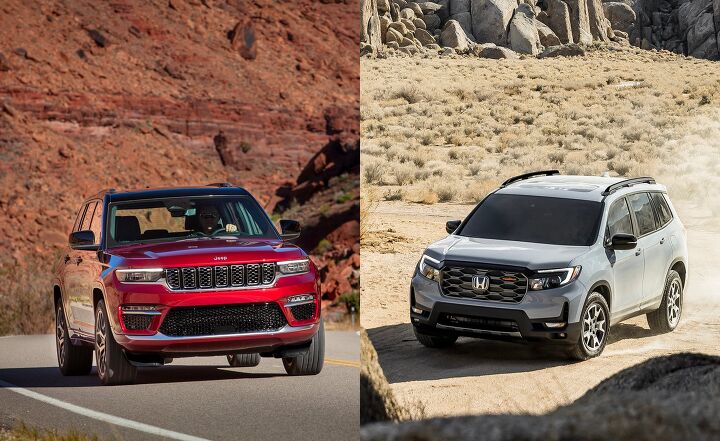































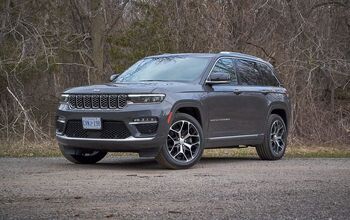
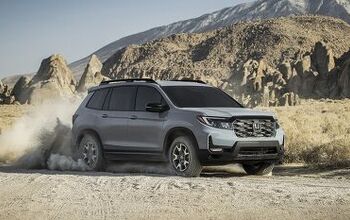
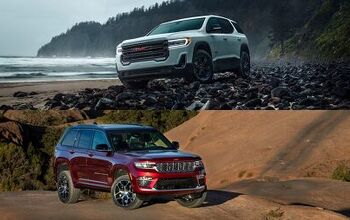
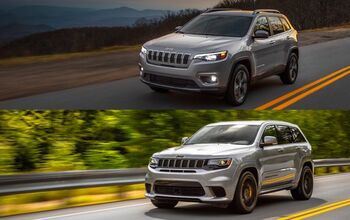











Comments
Join the conversation